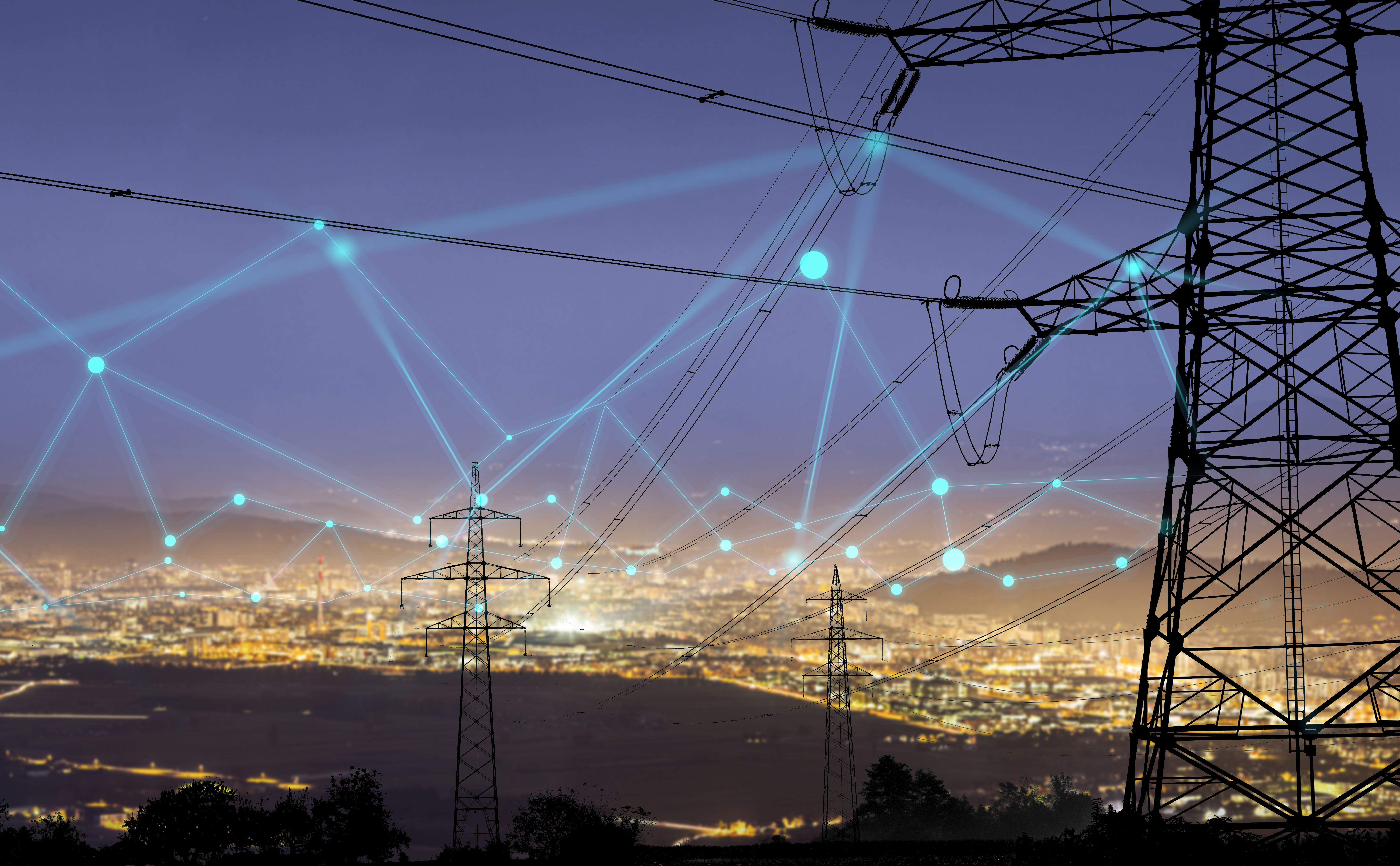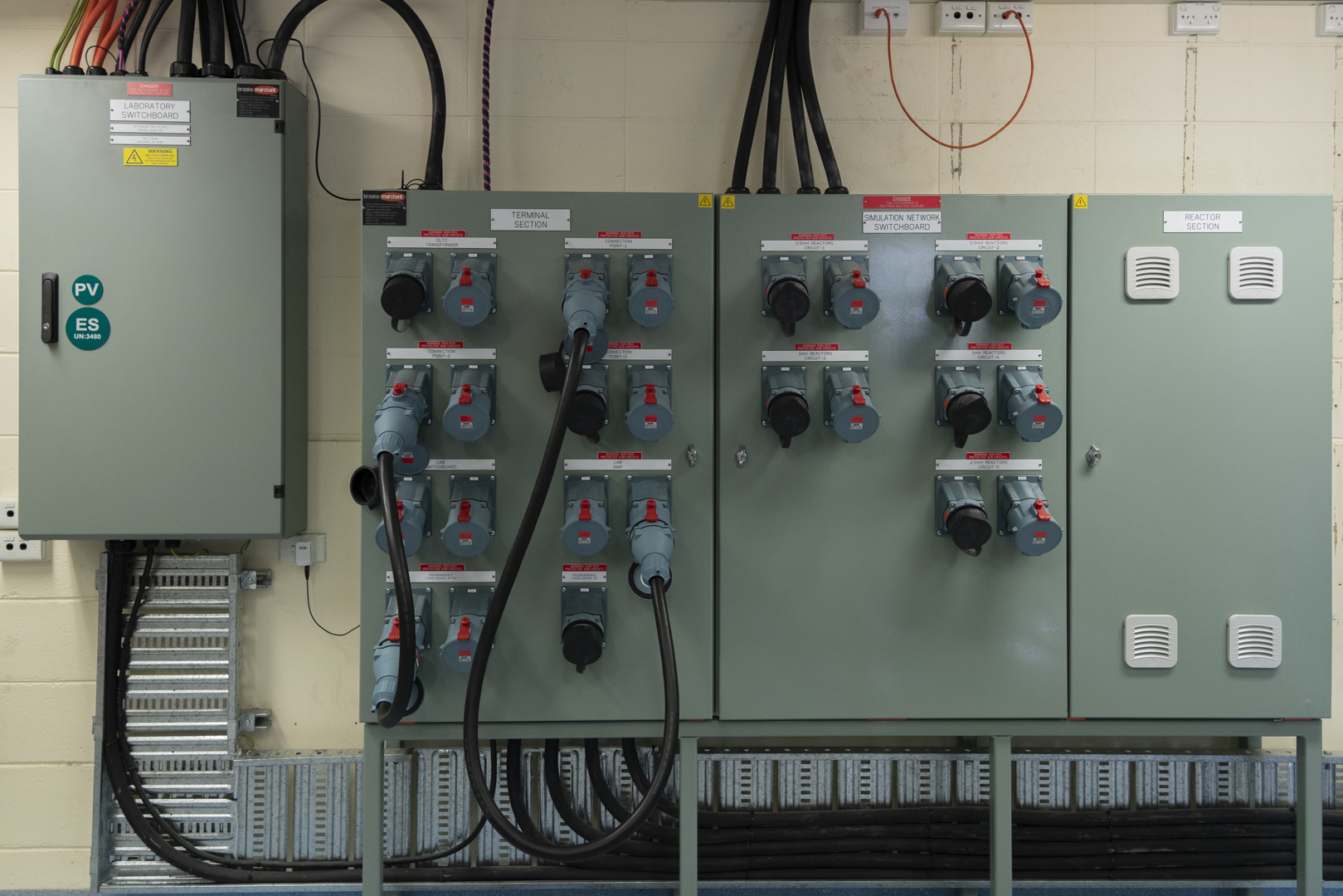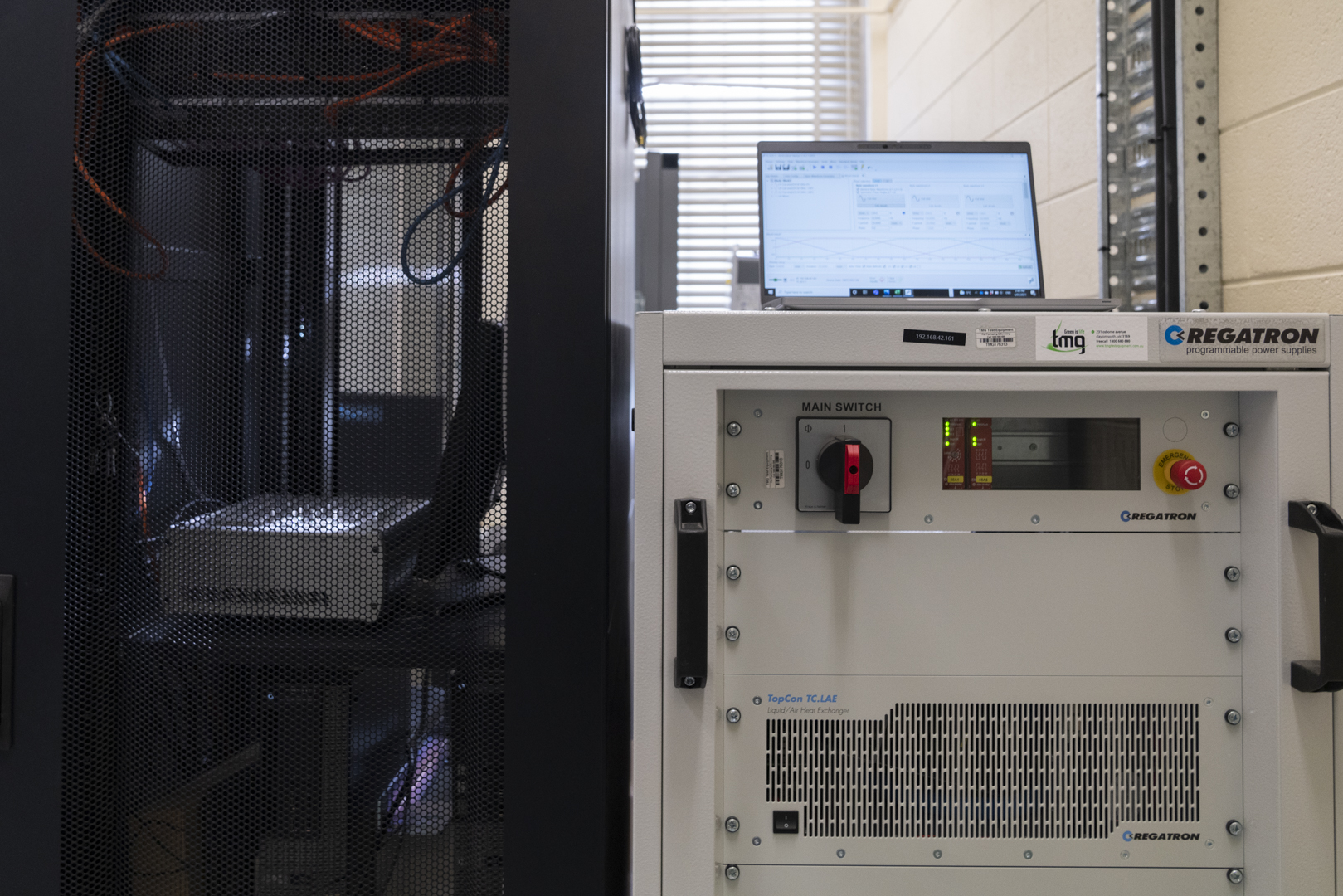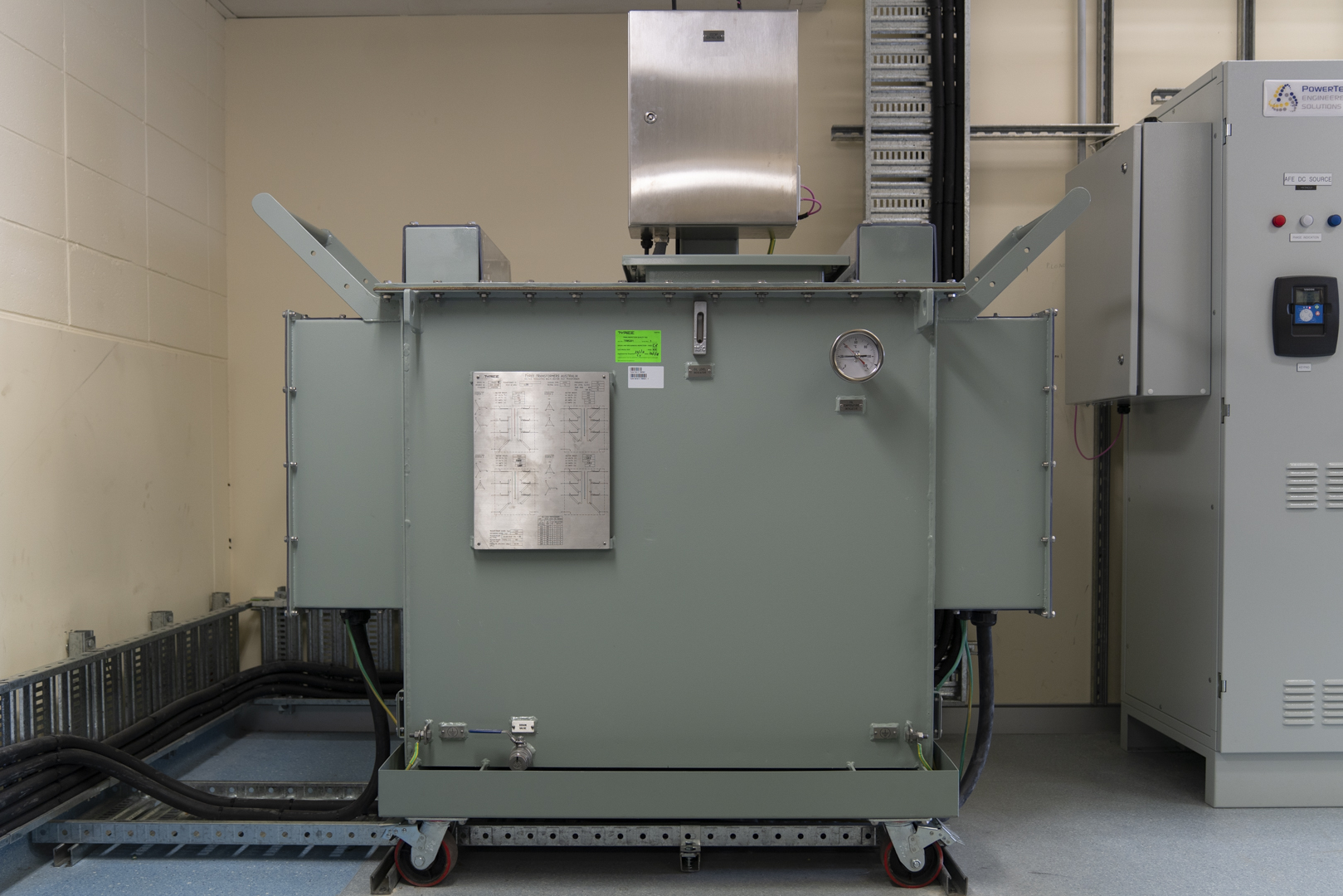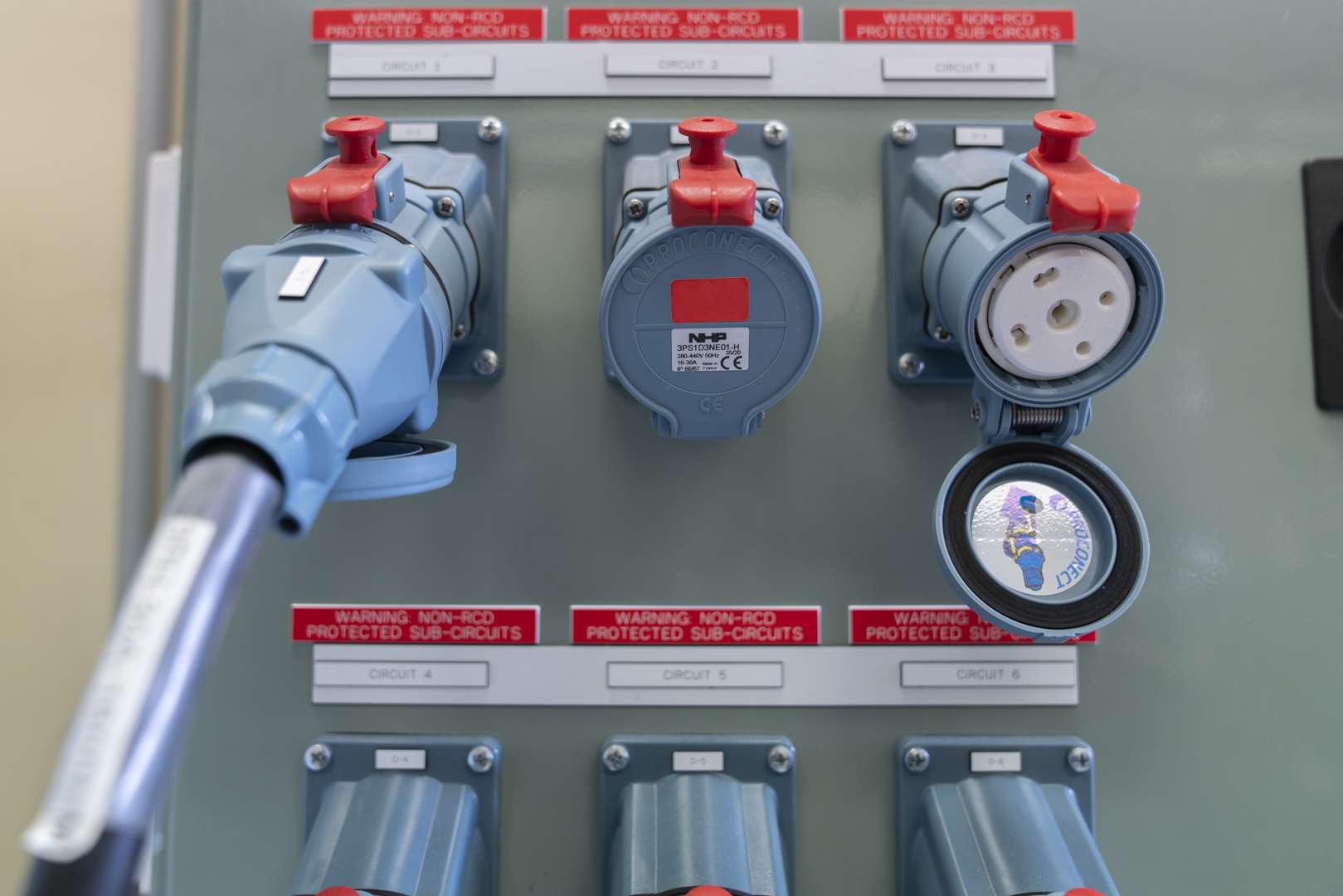Distribution Segment Including OLTC Transformer
The backbone of the Lab is a simulated distribution network that consists of three
connection points separated by variable impedances. These impedances can be tuned to create
strong (low impedances) or weak (high impedances) grid conditions. The Lab also contains a
custom 75kVA transformer with On Load Tap Changing (OLTC) capabilities. Transformer tap
changes produce sharp dynamics that DER devices must handle appropriately.
Connection Points
Each of the lab's three connection points represent a customers' property, specifically
their electrical switchboard. Each connection points allows users to plug in up to six AC
devices, such as solar or battery inverters, which are mounted on mobile trolleys. The solar
inverters can be connected to PV strings on the roof or the PV simulator. Each battery and
hybrid inverter is paired with a battery mounted on the same mobile trolley.
DER Devices and Simulators
The Lab provides users with a wide range of Australia's most popular DER devices. This
includes one AC solar string, 5 DC solar strings, 11 solar inverters, 4 battery inverters, 2
hybrid inverters, 7 batteries, and an EV charger . It also features a 5 kW programmable
solar simulator and three 6.5 kVA programable four-quadrant loads (and generators).
Monitoring
The Lab is equipped with super high fidelity monitoring providing unrivaled visibility.
Voltage and current are recorded at every point of interest at a sampling rate of 62.5 kHz,
providing sub-cycle resolution of the AC waveforms.
Control System
For ease of use, most devices in the Lab have been integrated into unified control system
that is available to users through MATLAB Simulink. The control system is hosted on the
dSPACE MicroLabBox.


